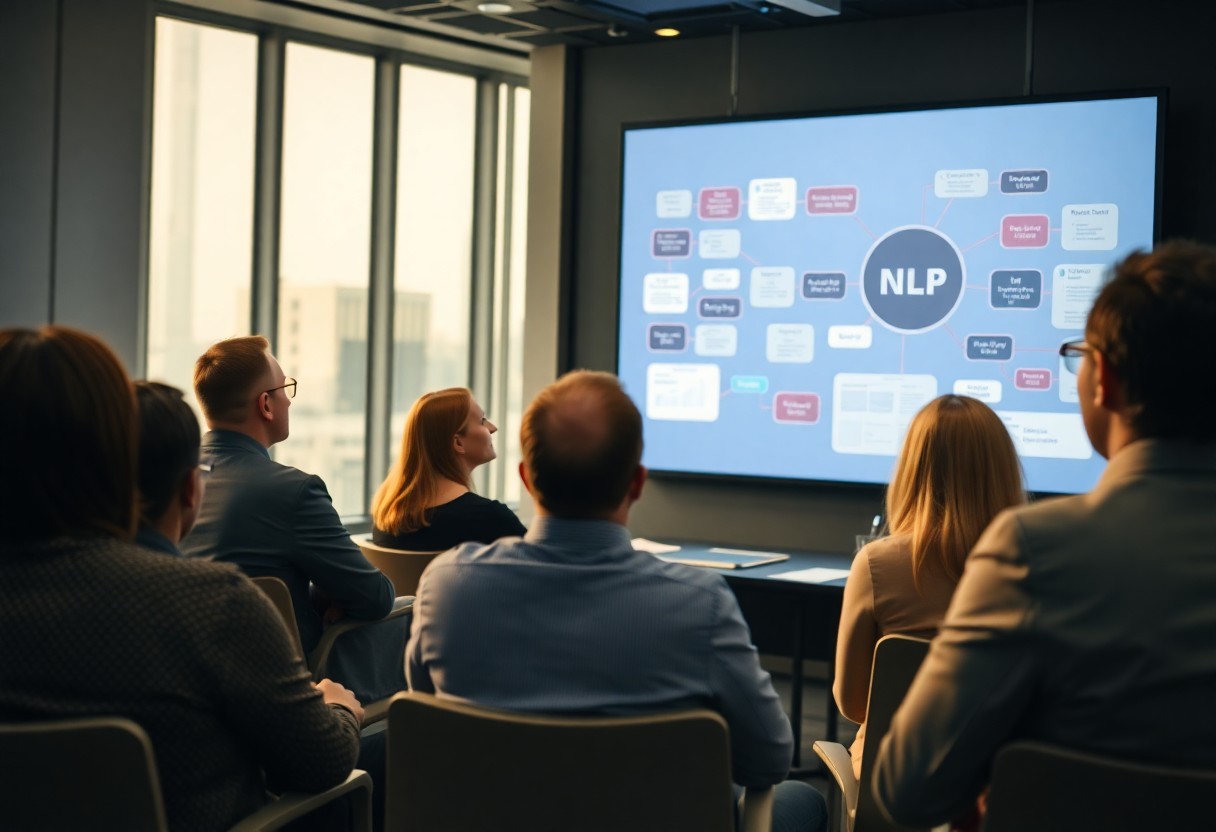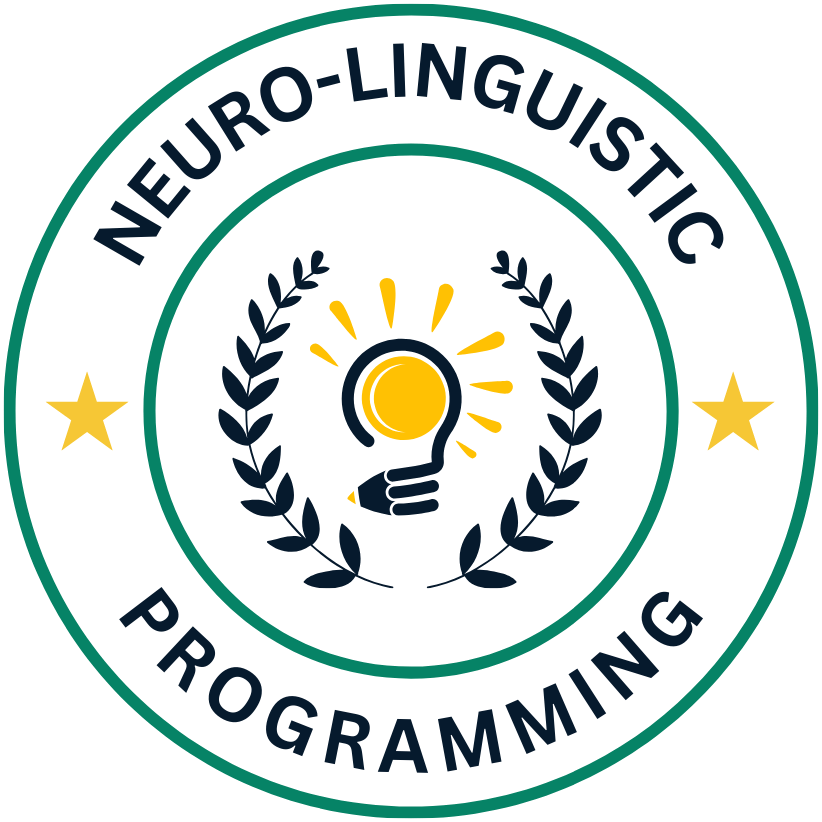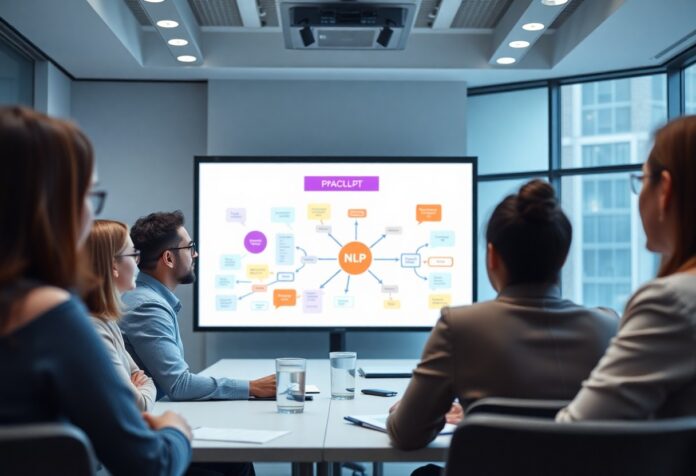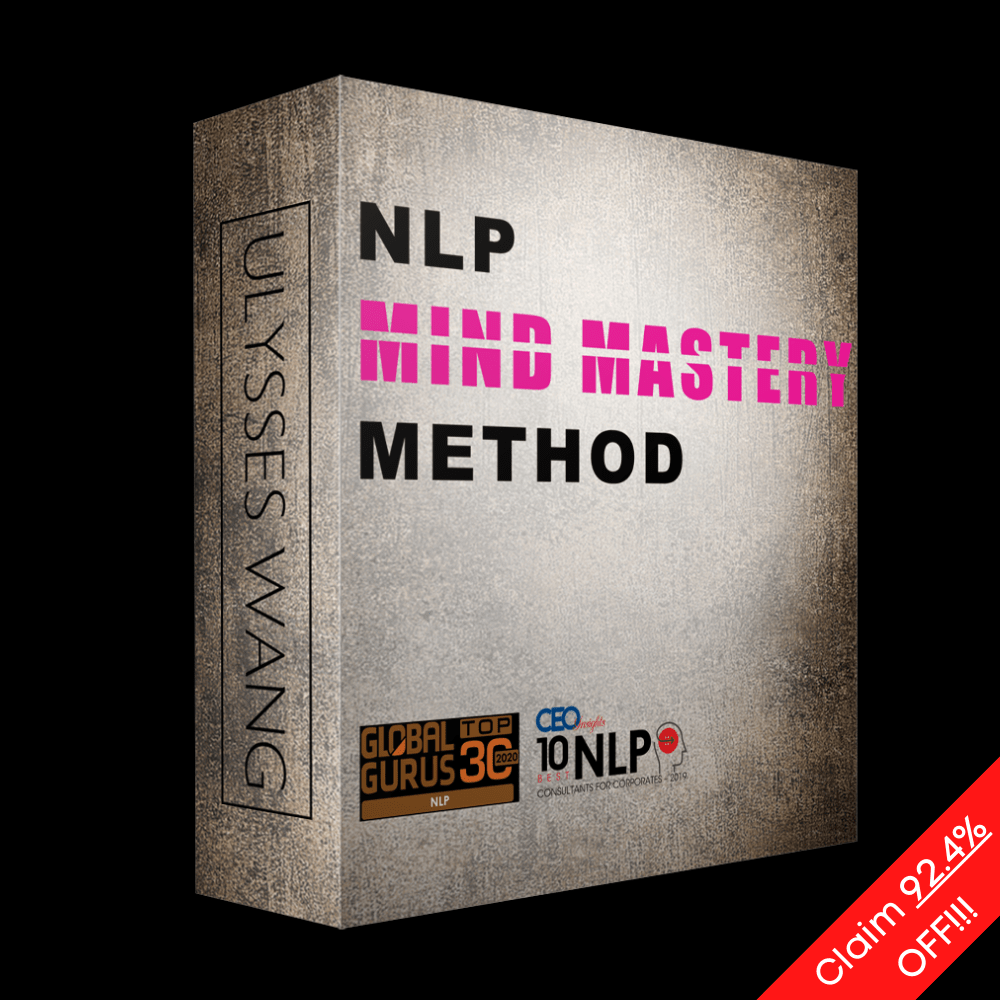Many presenters find themselves striving to make a lasting impact on their audience. By incorporating advanced techniques from Neuro-Linguistic Programming (NLP), you can transform your presentations into powerful experiences that resonate with your listeners. In this post, you will learn how to utilize NLP strategies to enhance your delivery, engage your audience more effectively, and create an unforgettable impression. Prepare to take your presentation skills to the next level!
Understanding NLP
What is Neuro-Linguistic Programming?
Clearly, Neuro-Linguistic Programming, often abbreviated as NLP, is a method of communication and personal development that stems from the understanding of the relationship between neurological processes, language, and behavioral patterns learned through experience. Developed in the 1970s by Richard Bandler and John Grinder, NLP explores how individuals can interpret their experiences and the world around them through a specific linguistic framework. This understanding allows you to recognize how the structures of language shape your thoughts, emotions, and actions, ultimately empowering you to adjust your communication strategies during presentations.
Key Principles of NLP
Some of the foundational principles of NLP focus on the idea that the maps we create in our minds are more important than the territory itself. By this, it means that your perception of reality significantly influences your responses and behaviors. Additionally, NLP posits that communication comprises more than just spoken words; body language and tone also play crucial roles in conveying your message effectively. By grasping these principles, you can enhance your ability to connect with your audience, making your presentations more engaging and impactful.
Understanding these key principles can allow you to apply advanced techniques in your presentations. For instance, recognizing how your audience’s perceptions shape their reactions can empower you to tailor your message by aligning it with their values and beliefs. Utilizing techniques such as mirroring to build rapport or applying reframing strategies to shift perspectives can significantly enhance your effectiveness as a presenter, allowing you to not only deliver information but also facilitate a transformation in understanding among your audience.

How to Implement NLP Techniques in Presentations
One effective way to integrate NLP techniques into your presentations is through the practice of setting clear intentions. By defining what you aim to achieve during your presentation, you create a focused environment that directs your energy and effort towards that goal. As you clarify your intentions, think about specific outcomes you desire for your audience. Are you looking to inform, inspire, or persuade? This clarity will not only guide your content but also help you stay aligned with your purpose throughout the presentation. To deepen your understanding of this technique, consider exploring Anchoring Techniques for NLP Trainers: Enhancing Learning … which illuminates how anchoring can support your intentions and enhance audience engagement.
Setting Your Intentions
You should approach each presentation with a clear set of intentions that resonates with both you and your audience. This process involves visualizing your desired outcomes and mentally rehearsing how you will achieve them. Taking the time to craft these intentions creates a roadmap for your delivery, allowing you to adapt your content and style in real-time based on audience feedback. With this focused approach, you’re more likely to establish an impactful connection with your listeners, fostering a conducive atmosphere for effective learning and retention.
Building Rapport with Your Audience
With effective communication, establishing rapport with your audience becomes an organic process. You can accomplish this by employing NLP techniques such as mirroring body language, using similar language patterns, and actively listening to audience responses. These actions create a sense of camaraderie, building a bridge of trust between you and your listeners. The more connected they feel to you, the more open they will be to embracing the insights and ideas presented.
Building rapport not only enhances the overall experience but also elevates the effectiveness of your message. When your audience feels understood and acknowledged, they are more likely to engage with your material and retain the information you share. As you progress through your presentation, periodically check in with your audience through eye contact and responsive gestures, ensuring they feel included in the conversation. This interactive approach will result in a more dynamic presentation that resonates deeply with your audience, promoting a positive exchange of ideas and information.
Tips for Effective Language Use
Even seasoned presenters can enhance their delivery through careful language selection. It’s vital to use clear, concise, and impactful language that resonates with your audience. Here are some tips to improve your language use:
- Utilize metaphor and analogy to clarify complex ideas.
- Incorporate sensory language to create vivid imagery.
- Adopt inclusive language to foster a sense of community.
- Employ repetition for emphasis on key points.
- Vary your tone and pace to maintain engagement.
After all, the way you frame your message can significantly affect how it is received, so consider the power of your words.
Language Patterns that Engage
Now, let’s explore specific language patterns that can draw your audience in. Using questions throughout your presentation can stimulate thought and encourage interaction. Rhetorical questions invite your audience to reflect, while direct questions may prompt participation. Additionally, using active voice makes your statements more compelling and accessible, presenting your ideas with strength and clarity.
Another effective pattern is leveraging storytelling. When you incorporate narratives into your presentation, you create a personal connection with your audience, aiding retention of the information shared. This can be achieved through relatable anecdotes or case studies that illustrate your key points, helping to transform abstract concepts into tangible insights.
Utilizing Positive Framing
Little changes in your presentation language can produce significant shifts in audience perception. Utilizing positive framing is one of the most effective strategies to create an uplifting experience. Instead of focusing on limitations or negative aspects, highlight opportunities and solutions. This approach not only keeps your audience engaged but also fosters a positive mindset that encourages open-mindedness and receptivity to your ideas.
Utilizing positive framing can transform the way your presentation is perceived. For instance, instead of stating, “We will lose customers if we don’t improve our service,” consider rephrasing it to, “By enhancing our service, we can attract even more satisfied customers.” This subtle shift in language not only inspires action but also instills confidence in your audience. Such mindful adjustments in word choice promote an optimistic atmosphere, which can resonate well with the listeners and elevate the overall impact of your presentation.
How to Incorporate Anchoring Techniques
Keep in mind that anchoring is a powerful technique from NLP that allows you to create specific emotional responses in your audience by associating a physical cue with a particular state of mind. By using anchors effectively, you can enhance the impact of your presentation, ensuring your audience remains engaged and connected to your message. This involves identifying moments in your presentation where you can establish a positive emotional connection and then reinforcing that association through consistent cues or gestures.
Creating Positive Associations
Any time you present, it’s vital to foster a positive atmosphere that resonates with your audience. To create positive associations, consider integrating sensory elements such as music, visuals, or even specific phrases that evoke uplifting emotions. For instance, if you notice a moment of connection during your presentation, you can physically touch an object or gesture in a way that your audience will remember. By consistently linking these gestures to positive feelings, you’ll create a reliable anchor that will help elevate their experience.
Using Anchors to Manage Audience Energy
An effective way to regulate the energy levels in your presentation is by utilizing anchors. Be attentive to the fluctuations in your audience’s engagement throughout your delivery. When you sense a dip in energy, employing a pre-established anchor—such as a specific hand gesture or phrase—can reignite enthusiasm and focus. Consistent practice of this technique allows you to tailor your presentation dynamically, ensuring your audience remains attentive.
Creating an intentional anchor for increased energy can also involve using contrasting physical actions. For instance, if you require a shift in mood or focus, you could increase your physical movement or volume in a particular section of your presentation. This contrast not only refreshes the energy in the room but also helps establish a clear symbol of transition, enhancing your overall message. With time and focus, these anchors can become powerful tools in your presentation arsenal, seamlessly guiding the emotional landscape of your audience.
Factors to Consider for Presentation Success
After honing your technical skills in NLP, you must also evaluate several factors that contribute to the success of your presentations. These factors will not only enhance your message but also ensure that your audience remains engaged and receptive to your ideas. Consider the following elements:
- Your audience’s background and knowledge level
- The setting and environment of the presentation
- The specific goals of your presentation
- The type of visual aids you choose to use
- Your own comfort and confidence level while presenting
Recognizing these factors can help you tailor your presentation, making it more appealing and effective for your listeners.
Audience Awareness
Presentation success largely hinges on understanding your audience. Who are they? What do they value? By defining your audience, you can mold your message to resonate with their interests and needs. Keeping a keen awareness of your listeners allows you to adapt your tone, language, and examples, ensuring that your content is not only digestible but also impactful.
Additionally, fostering a connection with your audience can boost their engagement levels. This can be achieved through eye contact, welcoming body language, and inviting participation. An engaged audience is far more likely to absorb your message, which is a primary objective of any successful presentation.
Timing and Delivery
If you underestimate the importance of timing and delivery, your compelling content may fall flat. Effective timing means strategically pacing your presentation to maintain interest and prevent fatigue. From the moment you begin, your delivery should be purposeful and marked by clarity. Each pause, each intonation, and even the speed of your speech plays a vital role in how your audience receives your message.
Plus, practice is key to mastering these elements. Rehearsing your content will not only help you identify where adjustments are needed but also give you the confidence to deliver your presentation smoothly. Consider employing NLP techniques to enhance your delivery, such as mirroring your audience’s energy or utilizing storytelling to maintain engagement. By refining your timing and delivery, you significantly improve the likelihood of a successful presentation that resonates with your audience.
Enhancing Non-Verbal Communication
Now that you understand the foundations of NLP, it’s time to examine how you can elevate your presentations through non-verbal communication. Your body language, voice, and facial expressions play a pivotal role in delivering your message effectively. When you align your non-verbal cues with your verbal content, you create a harmonious experience for your audience, helping them connect with you on a deeper level. By being aware of your personal body language and adapting it to the context of your presentation, you can significantly enhance your audience’s understanding and engagement.
The Power of Body Language
Now, let’s investigate into the power of body language. Your body movements, posture, and gestures can convey confidence and authority. When you stand tall with open shoulders and maintain eye contact with your audience, you project a sense of credibility that is both compelling and persuasive. Additionally, the strategic use of gestures can emphasize key points in your presentation, making them more memorable. Being mindful of your physical presence allows you to better connect with your audience, fostering an environment conducive to effective communication.
Voice Modulation Techniques
Clearly, voice modulation is another imperative aspect of non-verbal communication that can enhance your presentations. Your tone, pitch, and pace can all impact the emotional resonance of your message. By varying your vocal qualities, you can highlight important information, maintain interest, and evoke specific emotions in your audience. For instance, using a slower pace with a lower pitch can create a sense of solemnity for serious points, while an upbeat tone can energize your audience.
This can be practiced by recording yourself during rehearsals and listening to how your voice sounds in different segments. Focus on employing pauses effectively—they can lend weight to your statements and give the audience time to absorb the information. Additionally, experimenting with volume can help you draw attention to particular parts of your presentation, reinforcing critical messages. By mastering these voice modulation techniques, you can significantly increase your persuasive abilities and create a more impactful presentation experience.
Final Words
Now that you have explored the advanced techniques of using NLP to enhance your presentations, you are equipped with valuable tools to create engaging and impactful experiences for your audience. By integrating these methods into your presentation style, you can effectively build rapport, capture attention, and facilitate audience engagement. Your ability to use language patterns, sensory language, and the strategic positioning of your message will not only make your presentations more memorable but also inspire your listeners to take action.
Moreover, incorporating storytelling techniques and utilizing effective body language will further elevate your presentation skills. As you apply these NLP strategies in your future presentations, you create a unique environment that fosters connection and understanding. This will ultimately empower you to communicate your ideas with confidence, making each presentation a powerful opportunity to influence and motivate your audience. Embrace these techniques, and watch as your presentations transform into dynamic interactions that resonate deeply with those who hear you.
Q: What are some basic principles of NLP that can enhance my presentations?
A: Neuro-Linguistic Programming (NLP) focuses on the connection between neurological processes, language, and behavioral patterns. In presentations, utilizing key NLP principles such as anchoring, sensory engagement, and mirroring can significantly improve audience engagement. For example, anchoring involves associating specific stimuli with desired emotional responses, helping your audience connect emotionally with your content. Engaging multiple senses—sight, sound, and touch—allows your audience to better retain information. Mirroring involves subtly mimicking your audience’s body language and tone, fostering connection and making them more receptive to your message.
Q: How can storytelling be integrated into my presentations using NLP techniques?
A: Storytelling can be a powerful tool in presentations and can be effectively enhanced using NLP techniques. By utilizing vivid imagery and emotionally charged language, you can create compelling narratives that resonate with your audience. Incorporating the structure of a well-crafted story—setting, conflict, and resolution—allows you to convey your message in a relatable manner. Additionally, employing meta-programs, which are the patterns or filters through which people perceive the world, can help you tailor your stories to appeal to diverse audience preferences. This makes your storytelling more impactful and helps maintain audience interest throughout your presentation.
Q: What role does audience feedback play in NLP-driven presentations?
A: Audience feedback is integral to the success of NLP-driven presentations as it allows presenters to gauge engagement and adjust their delivery in real-time. By being observant of non-verbal cues—such as facial expressions, body language, and eye contact—you can assess whether your audience is connecting with your material. Utilizing techniques such as questioning and encouraging participation enables you to foster interaction and adapt your content based on audience responses. Furthermore, actively seeking feedback after the presentation can provide insights for improvement and help build rapport, making future presentations even more effective.



